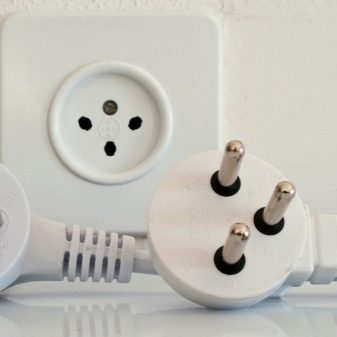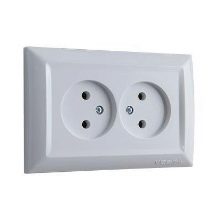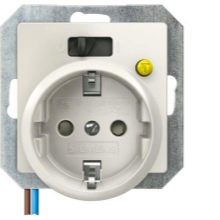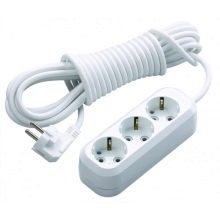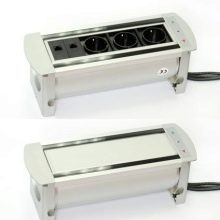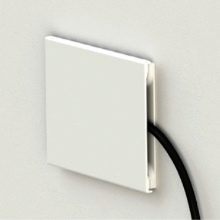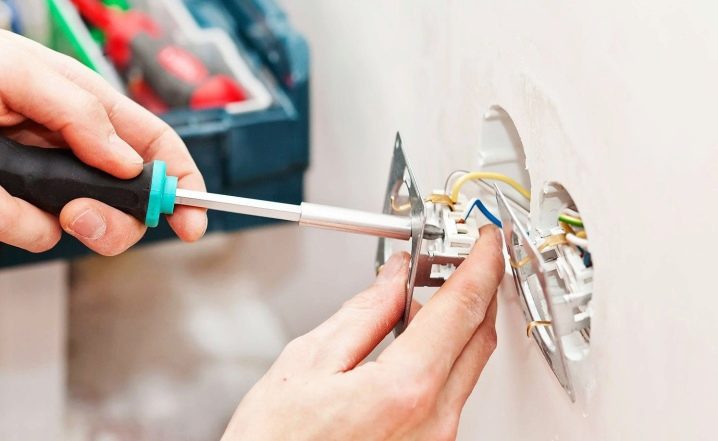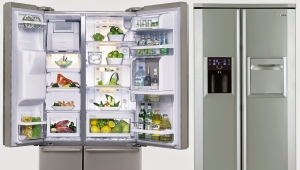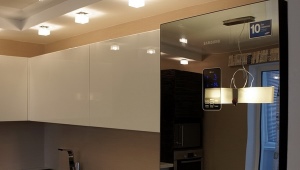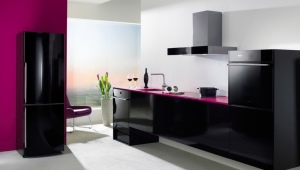Socket for the refrigerator
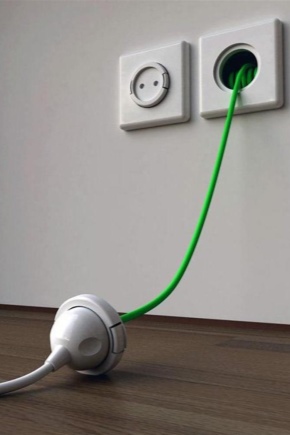
The number and location of sockets is an extremely important issue in interior design (especially when it comes to the kitchen). In the kitchen, as a rule, not only a large amount of furniture is collected. There is a major part of household appliances that require electrical outlets. At the same time, the outlet for the refrigerator does not differ in any particular features, however, it may be difficult to determine where to place it.
Where is the best place?
The best location of outlets is the subject of endless debate among designers, designers, and room owners. The result also depends on many factors - the general kitchen plan, the length of the wire at the refrigerator plug, individual preferences. An important role here is played by the original arrangement of wiring in the kitchen. The question is simplified if it can be changed (or if it is created from scratch).
There is an opinion that The best option for the location of the outlet - directly behind the refrigerator. Many modern models at the bottom have a special recess in the case, which allows you to place an outlet just above the baseboard. This option is especially convenient when the length of the refrigerator's plug wire is relatively short, which does not allow stretching it a little further (and this happens more and more often, as manufacturers tend to save on materials). The very exit of the wire from the housing while in its lower part.
However, it is often forgotten that sometimes there is a need to disconnect the equipment from electricity (or you may need to repair a broken outlet). If at the same time the socket will be located behind the refrigerator, it will have to be removed, which is not so easy with a significant weight of the unit.
Many models of refrigerators allow you to turn on the defrost mode, and not disconnect the equipment from the network. Often, this is cited as an argument for placing an outlet on the wall behind a refrigerator. But at the same time, we should not forget that disconnecting appliances from the network is an important item of household safety appliances.This is necessary for long-term departure. Manufacturers of refrigerators are often prescribed in the instructions for the need to pull out the plug when the power is turned off. And some models are completely tight to the wall, leaving no space even for an L-shaped outlet, which is used in such cases.
Besides, To save space and efficiency, it is recommended to make double sockets, not single for each device. This way you can save space for them and provide additional supplies - in case other devices appear during operation.
Many electricians recommend a height of at least 20 cm from the floor level. The best option is 25-30 cm. At the same time, you can hide the outlet in order to preserve aesthetics by placing it in a special wall cavity or in a kitchen cabinet. If such options are not possible, be sure to install a special automatic switch on the outlet that will allow you to remotely turn off the power and not worry about the security of the wiring. Another alternative method is to use an extension cord that can be stretched to any convenient place in the kitchen.
Types of sockets
On the one hand, the choice on the electronics market is quite wide, and on the other, it is limited by several factors.
The traditional socket is known to all, but more and more often they note its inconvenience, both in terms of design and in terms of rationality in the layout. However, such sockets are often double, triple, which allows you to combine plugs from different household appliances in one place. If there are children and animals in the house, it is worthwhile to acquire special safe options.
A variety that has recently gained popularity is a hidden rosette. It saves additional space and is designed to occupy minimal space around the installation site.
How to install?
If you have to independently install the outlet in the wall, first of all find out what it is. From the thickness of the wall depends on the choice of tools and related elements. The important point is the fact that the power outlet is in a place that is not yet occupied by wires, pipes or something else. To do this, you need to know their location (or check with special devices - for example, metal detectors).
The easiest way to install the socket on the drywall - for this you need a milling nozzle for a drill, with which a recess is cut. A sub-socket (box) is screwed into it, and after it has been pulled through wires and connected to the terminals, a socket is inserted into it. This is how the so-called hidden socket is installed, which saves space in the room. Conventional sockets require much less effort and are more often used in spacious rooms, as well as on too hard walls (it is difficult to screw simple screws into them).
If there is a brick wall in the kitchen, you will have to use a punch or a drill with a power of at least 600 watts. You will also need dowels for solid brick - the same diameter as the nozzle for the drill. It is best to take a drill with a weld with a special alloy of cobalt and tungsten. All this can be used for other very durable surfaces (for example, for concrete - a common material for walls in modern apartments).
How to install the outlet for the refrigerator, learn from the following video.



